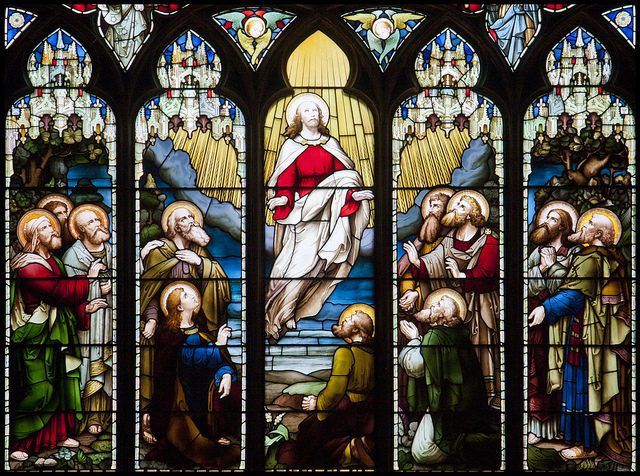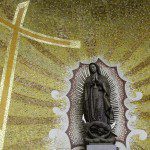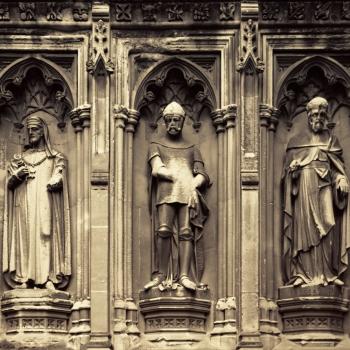
Yesterday, in the Catholic churches across North American, we celebrated the Ascension of our Lord into Heaven. As an Evangelical Protestant, we paid little attention to the wider liturgical calendar—apart from Christmas and Easter—but today in Catholic, Orthodox, and mainline Protestant churches this incredible occasion was, I’d argue, rightly marked.
And rightly given its place of importance as we commemorate the life of our Lord.
While this pivotal day may have gone unnoticed in many evangelical communities it’s the defining event, the catalyst, for the life of the Christian Church on Earth. It marks our mission, our marching orders, and charges us, as Jesus ascended to the right hand of the Father, with praising God’s incredible work, and then getting on with it.
Of affixing our eyes back on solid ground, and moving forward to finish the miracle started by Christ.
The Ascension and the Culmination of Jesus’s Earthly Mission
The celebration of Jesus’s ascension into Heaven has been marked since the beginning of the Christian Church on earth. St. Augustine, writing in the fifth century, links the celebration of the Feast of the Ascension with the very apostles sent by Christ. Since the time of the apostles, according the St. Augustine, the Church marked the end, the conclusion, of Jesus’s earthly ministry. The conclusion of Jesus’s time, bodily, on earth.
At the Ascension, Jesus concluded His work on earth. After His miraculous resurrection, Jesus spent forty days with his apostles. Though we have scare little to tell us what our Lord and his closest disciples did during this time we do have, importantly, His final words. Importantly it’s these words—these final words—which are all that much more important, standing in contrast, with the stark lack of information of what else Jesus did during His post-resurrection appearance.
It’s that much more important, then, to listen very carefully here.
In His last charge, His final commission, St. Mark records His words as,
Go into all the world and preach the gospel to all creation. He who has believed and has been baptized shall be saved; but he who has disbelieved shall be condemned.
Post-Ascension, in the wake of Jesus’s bodily departure from the world, He charges His disciples with preaching the gospel, and baptizing. A baptism, interestingly enough, which our Lord says humankind, “shall be saved.”
The Ascension and Jesus’s Commission
Our commission, then, is simple: The Ascension marks the end of Jesus’s earthly ministry, and the beginning of ours.
We, the Church, take up the work that Jesus began. We, the Church, witness in His place; we evangelize in His place; we bring peace, forgiveness, and healing in His place; and we suffer in His place.
We, the Church, become the hands and feet of our Lord, in Heaven.
St. Augustine writes, poignantly, of the Ascension that,
“He did not leave Heaven when He came down to us; nor did He withdraw from us when He went up again into Heaven.”
Instead, writes St. Augustine, Jesus was in Heaven while also bodily living, breathing, and heralding the Kingdom of God here on earth.
Jesus occupied both spaces.
So too, remarkably, does the Church.
The Church on Heaven and the Church on Earth
The early martyrs of the Church recognized well their oneness with Christ, and their fundamental mission. Jesus asks Saul, a zealous Jew tracking down and executing the earliest Christians, “Saul, Saul, why do you persecute me?”
Saul—later St. Paul—never laid eyes, let alone hands, on the bodily Jesus. Rather, Saul persecuted the early Christian Church, which Jesus identifies, clearly, as Him.
The Church is Jesus, and Jesus in Heaven. Importantly, critically, the Church’s identity is fundamentally founded both in Heaven and earth.
The Catholic Church, crucially, recognizes these two wings of the Christian Church as the Church Triumphant, in Heaven, and the Church Militant, on earth. Joined cosmically, miraculously, and across all of time we form a continuous stream of Christian witness from the very day of the departure of our Lord—a very real, one-time event in history—to the very end of time, and His triumphant return.
Joined in union with those that went before us, and those that will come after, our charge is to preach, teach, and baptize. Charged to, literally be Jesus—as Jesus recognized the Early Christians persecuted by Saul.
What the Ascension Means to Us
Our takeaway, on this, the day after the Feast of the Ascension, is simple. Stop looking at the clouds, and get out there.
Jesus ascended to Heaven, fulfilling His mission on earth, and charging us with ours. To be Jesus to the world. To begin the redeeming work that Christ started with His teaching, His death, and then His resurrection. Together, with those Christians who celebrated the Ascension at the beginning of this history of the Church—together with the great apostles who witnessed the ascension of our Lord, we join our prayers, our acts of evangelization, and our redemptive work.
The Ascension leaves us without excuse. We, the Christian Church, are fundamentally called to be, to act, and to witness to the ends of the earth. There is no one else to do it for us, and there is no other name on earth for which humankind can be saved. We Christians, with the vision of the glorious Ascension of Christ still shining in our eyes, must stop staring up at the sky in wonder, and go out and do.












